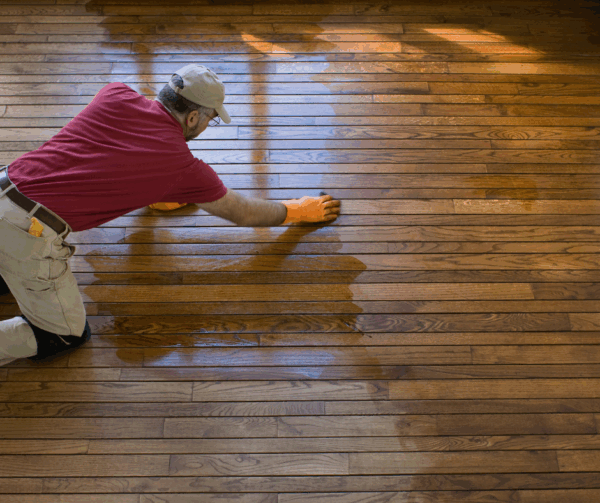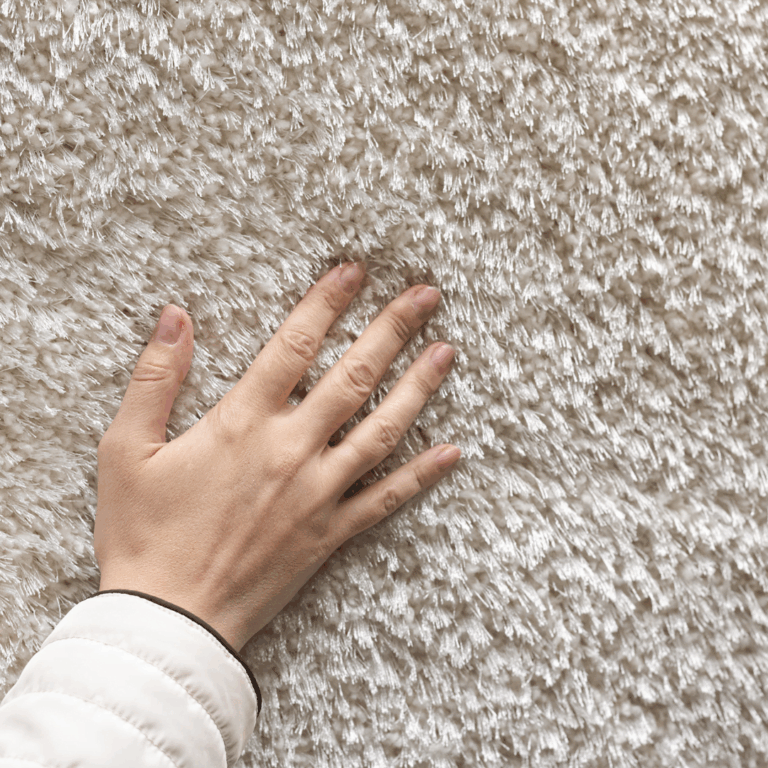
The 6 Carpet Flooring Trends for 2025
1. Soft and Cozy Textures
Soft carpets are popular, making floors feel comfy. High-pile styles like Saxony and velvet are great for bedrooms and living rooms, adding comfort and style.
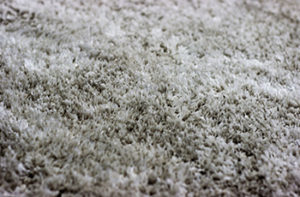
2. Nature Colors
Colors like sage green, terracotta, and sand are popular, bringing outdoor vibes indoors. These colors create a calm feel and go well with natural things.

3. Bold Patterns
Bold patterns like geometric designs and abstract shapes are trendy in 2025. These carpets stand out and add character to any room.
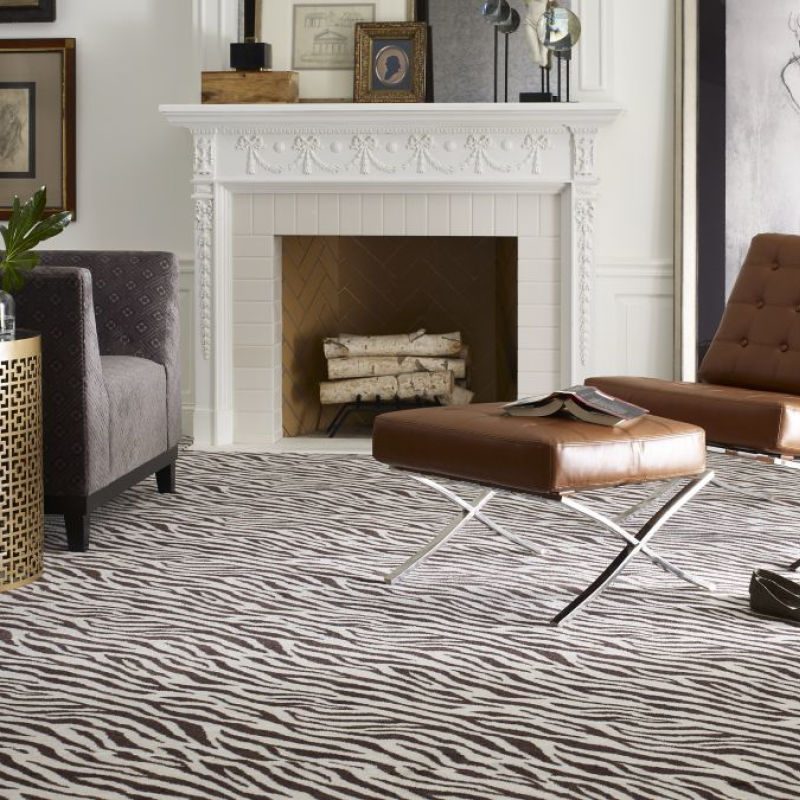
4. Durable for Kids and Pets
Strong carpets are important for homes with kids and pets. They resist stains and are easy to clean, staying nice for a long time.

5. Eco-Friendly Materials
Eco-friendly carpets made from recycled materials are popular. They are good for the planet and still look stylish and feel comfortable.

6. Smooth Carpet Transitions
Carpets that smoothly connect different rooms make the home look unified. Matching textures and colors improve the overall design.

Carpet Fiber Types Explained (Pros & Cons)
Picking the right carpet fiber is as important as choosing the style or color. Each type has its own strengths, like luxury, durability, stain resistance, or being eco-friendly. Here’s what to know about common fibers in 2025:
Nylon
Nylon is a popular synthetic fiber known for being strong and tough. It handles foot traffic well, perfect for busy areas like hallways and living rooms. It also does well with stains when treated.
Polyester
Polyester is soft and affordable, great for bedrooms or guest rooms. It offers bright colors and is naturally resistant to stains, but may flatten faster than nylon in busy spots.
Wool
Wool is a top natural fiber — very soft, durable, and naturally resistant to stains and fires. It’s ideal for formal areas but is more expensive and needs more care.
Triexta
Triexta is a newer fiber, combining softness and strength, perfect for families with kids or pets. It resists stains without chemicals and holds up well under heavy use.
Olefin (Polypropylene)
Olefin resists moisture and mildew, making it suitable for basements or low-humidity places. It’s less tough than other fibers, best for low-traffic areas.
Quick Comparison: Carpet Fibers at a Glance
| Fiber Type | Best For | Softness | Stain Resistance | Durability | Avg. Cost (per sq ft) |
|---|---|---|---|---|---|
| Nylon | High-traffic areas | ★★★★☆ | ★★★★☆ | ★★★★★ | $2 – $6 |
| Polyester | Bedrooms, guest rooms | ★★★★★ | ★★★★☆ | ★★☆☆☆ | $1.50 – $4 |
| Wool | Luxury living areas | ★★★★★ | ★★★☆☆ (natural) | ★★★★★ | $5 – $12 |
| Triexta | Kids’ rooms, family areas | ★★★★☆ | ★★★★★ | ★★★★☆ | $3 – $6 |
| Olefin | Basements, utility rooms | ★★☆☆☆ | ★★★☆☆ | ★★☆☆☆ | $1 – $3 |
Best Carpet Styles by Room
The best carpet for your home varies based on the room’s use, traffic, and design. Here’s how to choose the right carpet for comfort, durability, and style.
Bedrooms (Luxury and Comfort)
In bedrooms, comfort is key. Choose soft, plush carpets like high-pile or velvety Saxony for a luxurious feel. Neutral or calming colors create a cozy atmosphere.
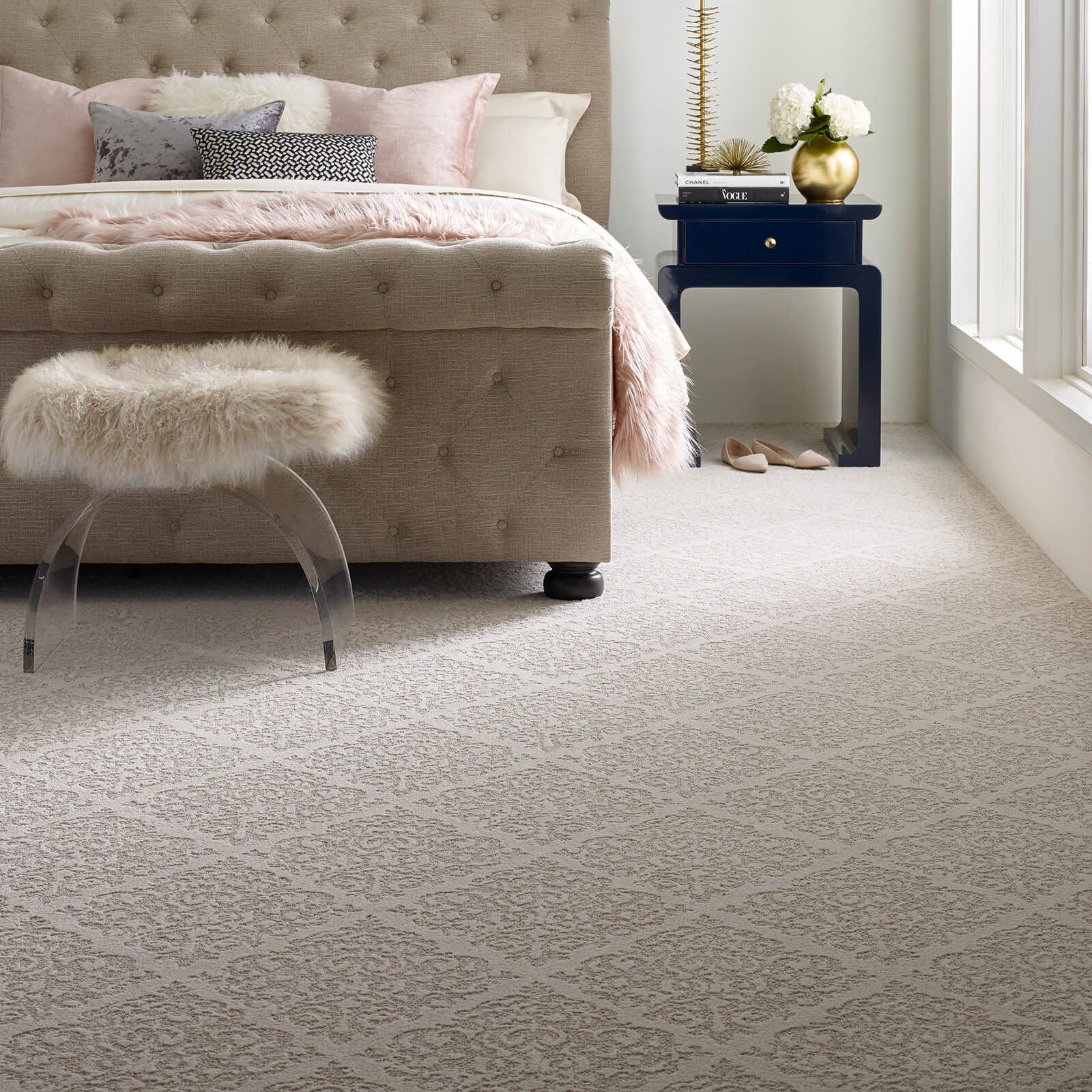
Living Rooms (Style + Durability)
Living rooms are busy areas, so pick carpets that balance style and toughness. Textured or patterned nylon or triexta fibers hide wear and add interest. Try looped or cut-loop styles for more texture.

Home Offices (Sound Absorption)
Carpet is great in home offices for sound absorption. Low-pile carpets reduce noise and help focus, especially in open areas. Subtle patterns or dark colors add a professional look and resist wear.

Stairs and Hallways (Low-Pile Options)
For stairs and hallways, choose durable, low-pile carpets like Berber for good traction. A dense weave in a forgiving color hides dirt and stays clean. Look at all of our carpet stairs options.
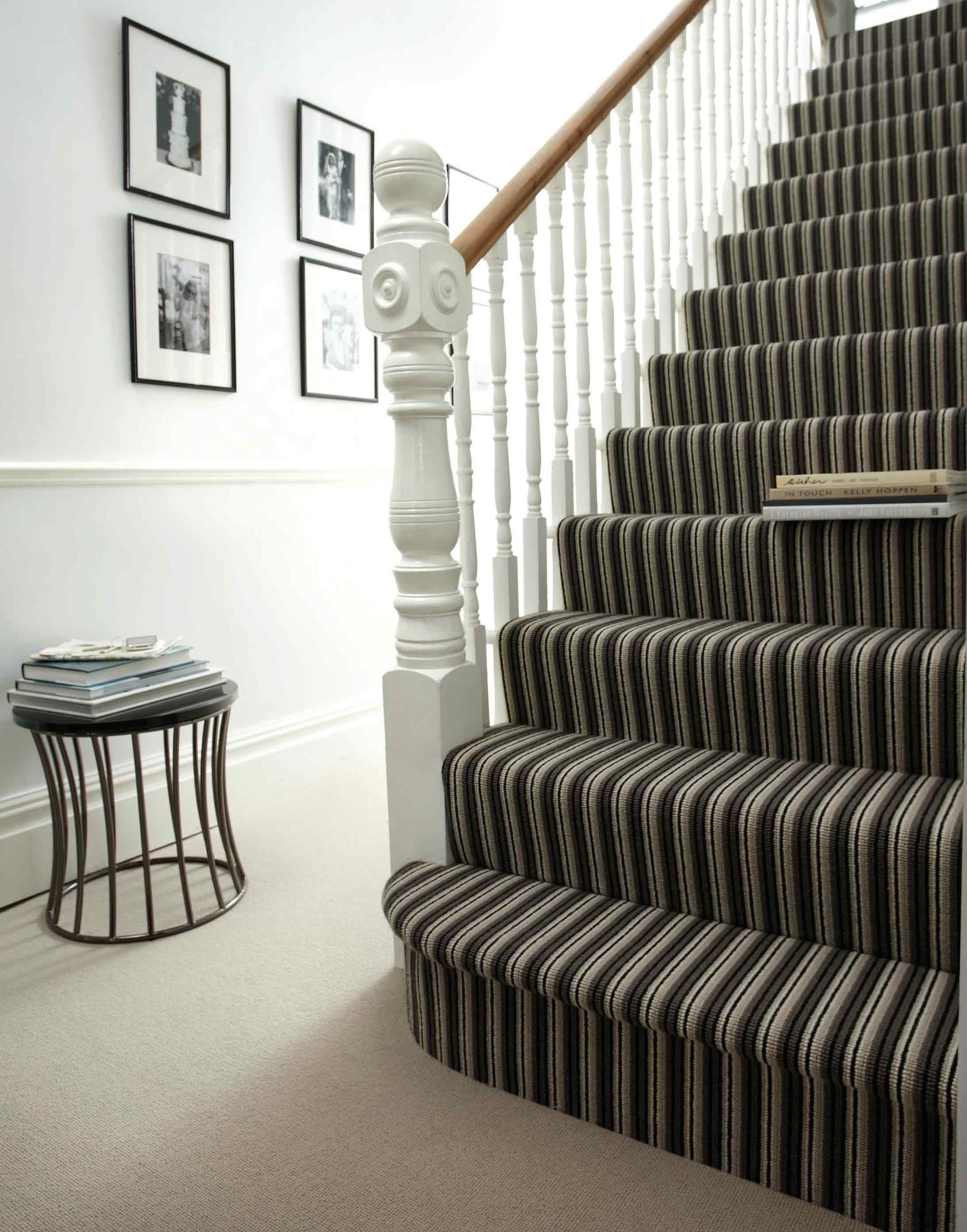
Rental Properties (Budget-Conscious Picks)
For rental properties, choose affordable, easy-to-maintain carpets. Polyester or olefin in neutral shades are budget-friendly and look fresh. Stain-resistant finishes and modular carpet tiles make replacements easy.

Carpet Flooring Costs in 2025
Knowing carpet costs involves more than just buying the roll. Things like fiber type, pile height, padding, and how it’s installed all add up. Here’s what to budget for in 2025.
Average Material Prices by Fiber and Style
Carpet prices change a lot based on fiber, pile type, and extra features. Here’s a look at typical costs per square foot:
| Carpet Type | Avg. Material Cost (per sq ft) | Notes |
|---|---|---|
| Polyester | $1.50 – $4.00 | Budget-friendly, soft, stain-resistant |
| Nylon | $2.00 – $6.00 | Durable and resilient for high-traffic areas |
| Triexta | $3.00 – $6.00 | Kid- and pet-friendly, eco-conscious |
| Wool | $5.00 – $12.00 | Luxury natural fiber, long lifespan |
| Olefin (Polypropylene) | $1.00 – $3.00 | Best for low-traffic or moisture-prone areas |
Installation Costs per Square Foot
Installing carpet ranges from $1.00 to $2.50 per sq ft, depending on the job’s complexity and room shape. Stairs and unusual rooms cost more because they need extra work.
Padding and Removal Costs
Padding: $0.50 – $1.00 per sq ft, based on density and material
Old Carpet Removal: $0.50 – $1.00 per sq ft
Furniture Moving (optional): May add $1.00 – $2.00 per sq ft depending on service
Good padding under your carpet makes it last longer and feel better — don’t skip it.
Long-Term Value and Warranty Coverage
Cheap options like polyester are nice at first but might wear out fast. Wool and high-quality synthetics have 10–25 year warranties, while cheaper ones might only have 5–10 years. Always check warranty details for things like stain resistance and texture.
DIY Carpet Installation vs. Hiring a Pro
Laying carpet on your own can save money if you have the right tools and skills. But many homeowners find that hiring a professional gives better results, with fewer errors and warranty coverage. Think about this before starting the project.
👉 Need assistance? Check out our DIY Carpet Installation Guide for tools, tips, and instructions.
Tack Strip vs. Glue-Down Installations
Most home carpets use tack strips around the room’s edge. This lets the carpet stretch for a snug fit, ideal for plush home settings.
Glue-down installation sticks the carpet directly to the floor, often used in commercial spaces. It’s good for durable, low-pile carpets in busy areas but is harder for DIY work.
Tools, Skill Level, and Prep Required
Installing carpet isn’t as easy as placing a rug. You need tools like a knee kicker, carpet stretcher, and utility knife. Preparing the subfloor by cleaning and leveling is key to avoid issues.
It takes practice to cut seams right and stretch carpet smoothly. Handy homeowners might manage small rooms, but complex areas may need a pro.
Common DIY Mistakes and Fixes
Frequent DIY carpet mistakes include:
Not stretching the carpet well, causing wrinkles or early wear
Cutting too short by walls or doors, leading to gaps
Skipping underlayment or using wrong padding, reducing comfort and durability
Poor seam alignment, making transitions noticeable
If uncertain, hiring a certified carpet installer can save time and ensure your warranty is protected.
Top Considerations Before Choosing Carpet Flooring
Carpet flooring is soft, warm, and flexible in design. Choosing the right one involves considering more than just color or texture. Think about these factors before installation.
Comfort and Insulation Benefits
Carpet is comfy and keeps heat in, making it ideal for bedrooms, living rooms, and basements. It also reduces noise, which is great for multi-level homes or apartments.
Stain Resistance and Family-Friendliness
For homes with kids, pets, or lots of movement, stain-resistant carpets are essential. Look for fibers like nylon or triexta that have stain blockers for easier cleanup and protection from spills and messes.
Allergens and Indoor Air Quality
Modern carpets often use hypoallergenic materials and antimicrobial treatments to reduce dust and allergens. Use a good vacuum and clean regularly for a healthier home environment.
Durability and Foot Traffic Suitability
Different carpets handle wear differently. Dense, low-pile carpets like Berber are better for busy areas, while plush ones fit quieter rooms. Match your carpet choice to how the room is used.
Design Cohesion with Furniture and Wall Colors
Carpet affects the look of a room. Choose a color and texture that match your furniture and wall colors. Neutral shades are versatile, while bold colors or patterns can create a statement.


